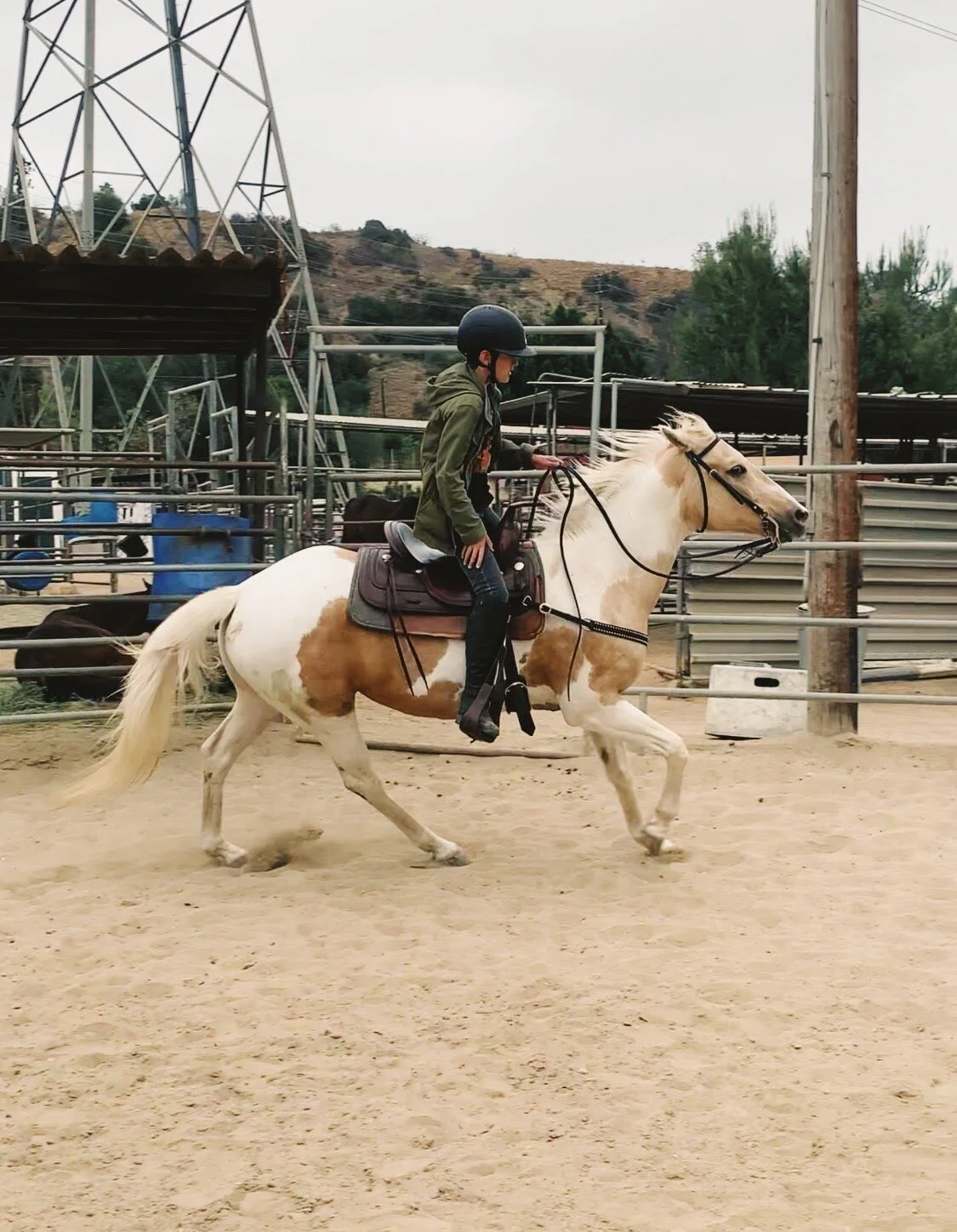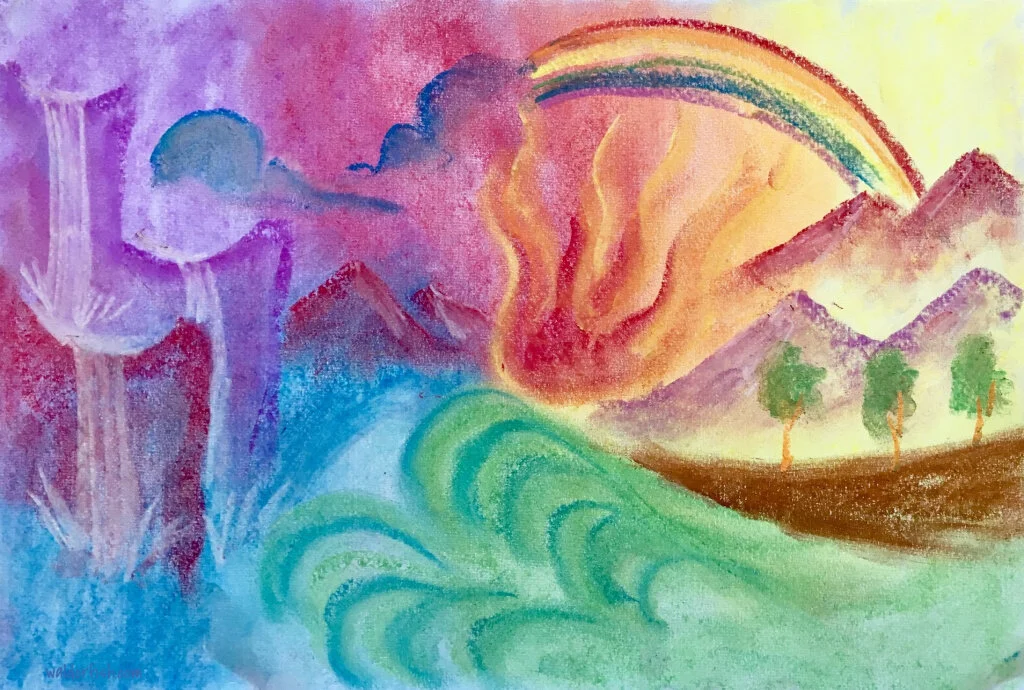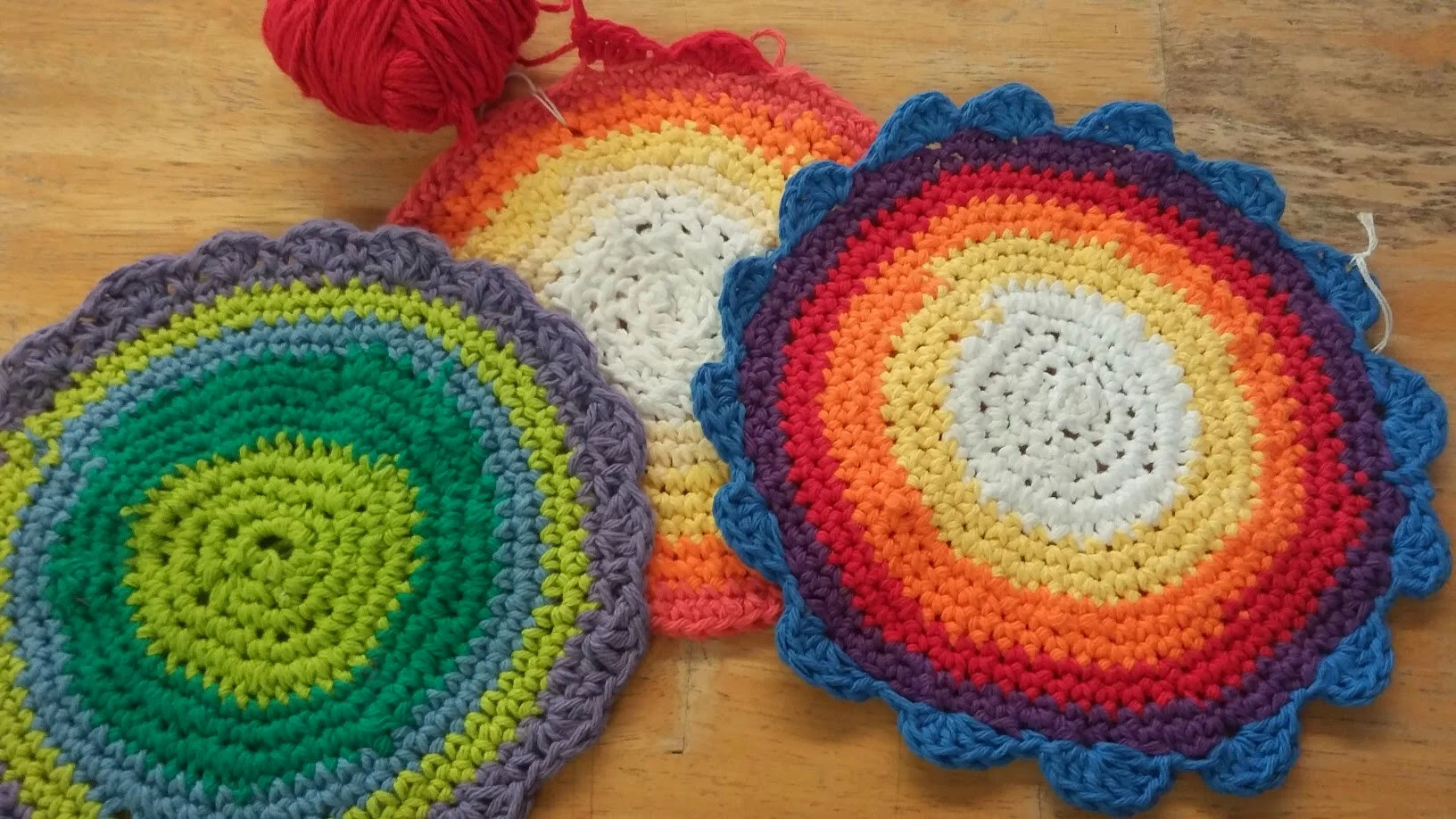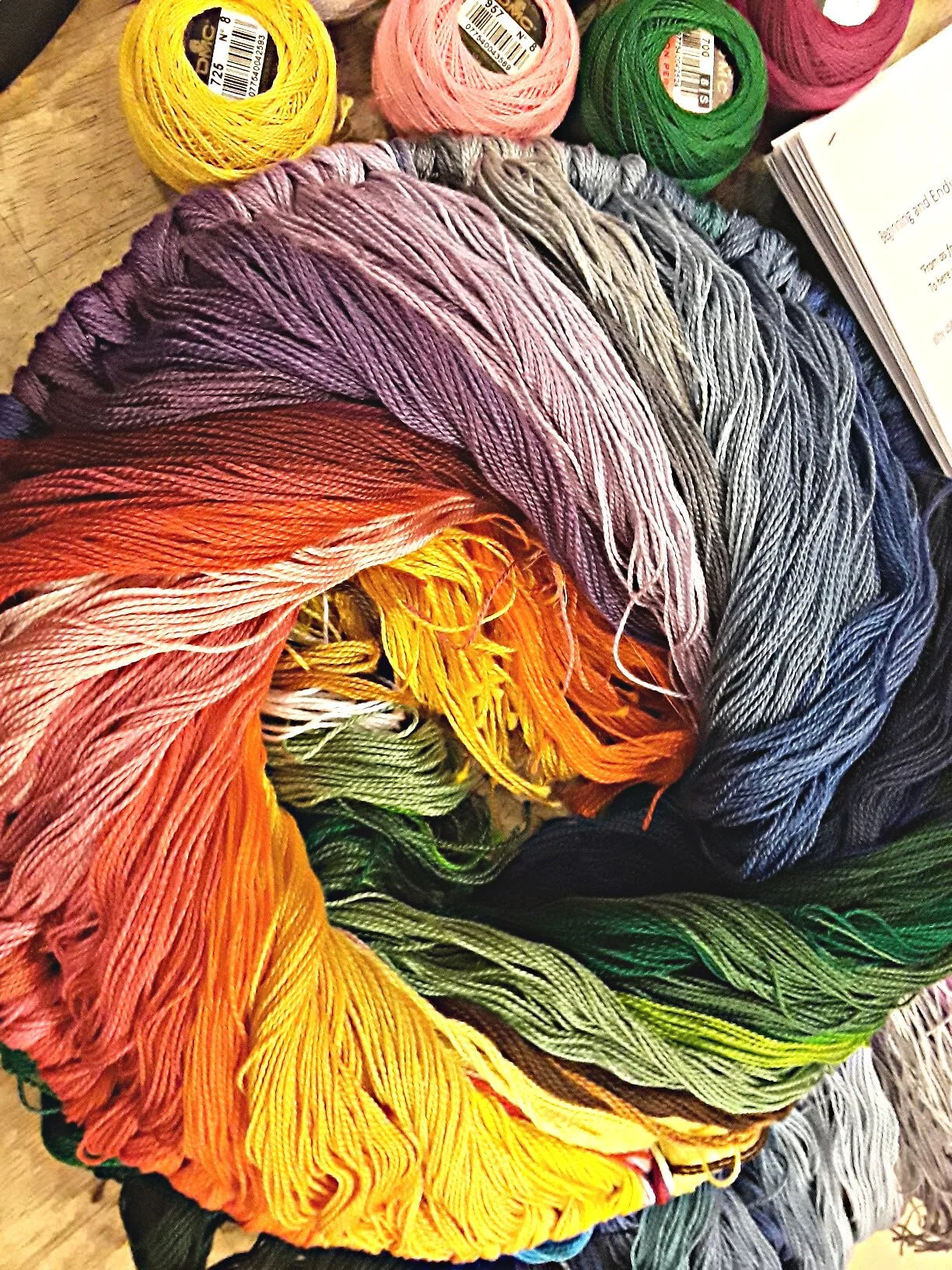
Waldorfish Blog
Allowing Your Children to Write Their Own Stories: Steiner and Awakening
Though our days are very slowly getting shorter, changes in the light do not escape me.
My thoughts attune with the familiar rhythms of Fall. What will my child accomplish this year? What will capture his imagination? With what will he struggle?
As I prepare myself to teach 7th grade, I find myself thinking back to the end of 4th.
It was a significant time for us; a major milestone was reached. I no longer had to encourage my son to translate what he was thinking into writing. Prior to that, he was writing thank you cards and other short assignments that were not difficult to complete. But I would not say that he enjoyed longer, more complex work. And what a child does not enjoy, he or she generally does not take initiative to pursue, let alone practice or excel in.
I (over)thought this a lot, and after one episode in 3rd grade that involved me “encouraging” him to color code a writing assignment (grammar practice) while he sat at our dining room table in distress, I made one of the best decisions of our home schooling life: I was not going to make him write anything complex or demanding until he showed a real interest in doing so himself.
“At all levels of linguistic experience, from the formation of the sounds, the letters of the alphabet, the rhythm of sentence structure, we find the metamorphosis of movement and gesture into structured form. – The Tasks and Content of the Steiner-Waldorf Curriculum, Avison and Rawson, Editors”
Student work from a language studies class.
While desk work was not highly successful by conventional standards, he was playing piano, reading music, and writing simple etudes for his instrument -- all of which took a considerable amount of commitment and practice. It wasn’t Language Arts, but it was undeniably reading and writing. He was also studying Japanese and loved to make his own practice books of writing (bonus – it was a lot like Form Drawing!). I had to acknowledge that this also registered as language arts-related.
We still worked on short passages together in English -- copy work, letters to friends and family, and other things that would probably be considered below his grade level. Despite the voices in my head telling me (shouting, actually) that I was making a huge mistake by not forcing the issue, I made a decision to let it all go. Instead I focused on our daily lessons without becoming overly dependent on one particular measure of retention or success.
“ Rudolf Steiner had tremendous confidence in the natural processes of development and reminded us that “That which is asleep will awaken.” That doesn’t mean we do nothing; rather, it means that the things we do need to be consonant with the child’s own developmental stages as they unfold. – Rahima Baldwin Dancy, You Are Your Child’s First Teacher.”
Then something happened.
During the last week of 4th grade, as a supplement to his Man and Animal block that had been completed earlier in the year, we studied a book from the Los Angeles Natural History Museum. He was deeply moved by the section on animal extinction and protections, as we had gone to a wolf sanctuary earlier in the year.
He read. And then he started to write. And write. And write. He didn’t stop until he had filled a piece of 8 ½ x 11 paper with line after line of cursive writing.
I knew it. I knew that if I was patient, consistent, and did not cause him undue stress, he would find his voice. Above all else, curiosity drives industry -- from the school room to the board room. Waldorf Education promotes curiosity and Waldorf homeschooling allows a child to truly be seen and develop at his or her own pace, the results of which can be astonishing.
Let's keep an open mind, trust our children, and allow them to write their story at their own pace!
About the Author
Cristina Havel lives in Southern California where she and her husband have worked together for nearly 2 decades. They homeschool their son using the Waldorf pedagogy as a guide and believe in the transformative powers of art and nature.
Biggest Bang (for your homeschooling dollars)
Make the most of your courses from Waldorfish.com!
Hi Friends!
As we talk with folks who’ve taken our Waldorf homeschooling courses over the years, we’ve noticed a trend.
A couple of trends, actually. It’s pretty straightforward, really: the folks who consistently do these 3 things get the most value from our programs.
1. Get Ready: Organize your supply situation!
Trust me, art teachers here, we get it - all those little bottles of pigment, and brushes, and paper, and charcoal pieces (!!), and crayon bits … the whole lot of them can take on a life of their own. There’s a solid chance your homeschooling and Waldorf art supplies could use a good Marie Kondo-ing, am I right?
Once you’ve taken stock of what you have, you’ll know what you need! After enrollment in our courses, we'll send you a supply list (with helpful links), and you can collect the items you still need, before you start lessons.
2. Get Set: Calendar your lessons!
Calendar your lessons, like you would for music or swimming lessons. If it’s not in your calendar, it’s not likely to happen.
You may find that you need to try a few different days/times in order to identify the sweet spot for the lessons in your week - some people love using our Weekly Art lessons to start their week – others find them the perfect way to end the week.
You can’t know without trying a few options first.
3. Go!
After completing each lesson, post your child’s work in the online classroom, or for art, share it with us in the private Weekly Art Facebook group!
All of our courses include feedback and mentoring from our teachers. Those families who post their work and ask questions in the classrooms get, by FAR, the biggest bang for their homeschooling bucks!
Purchasing our courses means that you now have a trained Waldorf teacher in your back pocket, available to help and answer your questions. Whew!
Questions? Let us know how we can help —> Click here!
How we build our courses
Waldorfish brings trained and experienced teachers into your homeschool classroom!
Most educators are stressed about teaching at least some of the subjects they need to cover.
And by “educators” I mean home AND classroom, just so we’re all on the same page.
At Waldorfish, we create video-based courses that teach the subjects typically causing Waldorf educators the most anxiety.
Our courses are a collaborative effort between trained Waldorf teachers.
Our teachers bring their years of experience from their classrooms, and in many cases, from mentoring & training other teachers too. Brian and I bring our our own time from the classroom, as well as our experience homeschooling, and our experience translating the content into a digital experience. The result is:
Courses crafted to deliver lessons that are true to the Waldorf pedagogy, in a way that addresses the unique needs of homeschooling families!
Creating things – taking an idea and building it from nothing into something – is pure JOY for us! The process of taking an idea-seed for a course, and molding, shaping and re-shaping it with the course Teacher is invigorating (and sometimes exhausting) – but always so rewarding!
This process takes months (always more months than we think it will!), many Zoom calls, lots of Google docs back and forth, and some tech mentoring.
(we see you teachers, learning to ROCK those video recordings!)
Supporting the work of Waldorf teachers
Very early on in the life of Waldorfish, we committed to sharing the revenue from all our course sales with the teachers of each program. There were, of course, other models we could have chosen to follow, but this is what felt the most true for us.
I’ve said it before, and I’m sure I’ll say it again – being a teacher typically has more spiritual rewards than financial ones (ahem.) We decided that Waldorfish would not only be how we supported our own family, but how other teachers could help support their families too!
We’d love to teach for you this year!
Questions? Let us know how we can help —> Click here!
The Warp and Weft - Waldorf Handwork Curriculum
We’re excited to share the third and final guest post from author, educator, and all around amazing human, Elizabeth Seward! Elizabeth brings decades of experience, and is sharing her insights into Waldorf handwork.
Like everything in the Waldorf curriculum, handwork cannot be reduced to a checklist.
Knitted dolls from the lower grades Waldorf handwork curriculum.
Every subject in Waldorf education is intricately and carefully woven around the children. It's a ‘seamless garment’ made to support the students where they are. It’s not a list of projects to work through. The array of subjects each child encounters is carefully attuned to the cognitive, emotional, physical, and spiritual growth of each student. Each subject complements every other subject in addressing each individual, like a tightly woven, continuous fabric. Teachers and homeschooling parents are either laying a foundation of skills and understanding, or building on that foundation. That's the wonder and the wisdom of the Waldorf curriculum. Steiner emphasized that each subject affects others, both within the day, the week, and as a whole.
In broad strokes, the handwork curriculum moves from using one thread (1st and 2nd grade knitting and crochet) to making the thread (in 3rd grade spinning), to bringing together plain fabric and a chosen decorative thread in order to put an individual stamp on a practical item such as a napkin or pencil case (monogram and embroidery in 4th grade). Then thinking moves into three dimensions with knitting in the round in 5th grade, and designing and sewing a three dimensional animal in 6th. Doll making takes thinking into the upright human form, and in 7th, clothing sewn by hand is indicated by Steiner, although seldom practiced in 21st century Western countries. 8th grade moves into the Industrial Age in history, and into machine sewing. The High School handwork curriculum recaps and develops these skills, adding another layer of complexity, such as drafting clothing patterns and tailoring in 9th grade, based on machine sewing in 8th grade.
The study of animals weaves into handwork curriculum throughout the grades.
Handwork weaves back and forth through all other subjects. For example, knitting toy animals in first and second grade lays a foundation for fables in Main Lesson in 2nd grade; for the Human and Animal block in 4th grade Main Lesson; the ‘thread’ returns to handwork in 6th grade, designing and sewing a three-dimensional animal and then doll-making in 7th grade, then to the Physiology Main Lesson in High School.
The fine finger movement of holding a sewing needle, learned correctly in first grade, supports finger dexterity in learning to play musical instruments, trains the students for embroidery in 4th, and fine handsewing in 7th grade, while also preparing them for exact geometric drawing in 5th and 6th, and using clay and stone sculpting tools in the High School. The practice of carefully observing and analyzing knitted and crochet stiches is a forerunner for pattern recognition, fundamental to math skills, especially to geometry.
“The physiological value of skillful hand movements is well-documented in regards to building brain capacity. Handwork through the grades is continuously supporting ongoing refinement of these uniquely human skills. ”
The closely interwoven nature of the curriculum means that teachers must work together. I can support and be supported by other teachers if I am aware of the curriculum as a whole, and actively collaborate with colleagues. For example, I used the poem “There were six men of Indostan”, when teaching 6th grade drafting and sewing of animals; my colleague returned to that poem in High School as a philosophical question about differing perceptions and the fallacy of believing we may individually possess the whole truth. In 7th grade sewing, I told the story found in the book “Clara and the Freedom Quilt” which sowed a seed for the history of slavery in the High School.
A simple and crocheted chicken!
Maintaining the integrity of this closely woven fabric demands a lot from teachers who want to bring an authentically enriched curriculum to the students - we must know the principles of human development as outlined by Steiner; we must know the specific indications for our and others’ subjects; we must carefully observe the children in front of us; and we must know our own strengths, sources of inspiration, and limitations. The enormous value of this approach to education is that both students and teachers will recognize the wholeness and integration of everything we learn.
“Children are changing, developing faster, able and eager to move faster with the times. At the same time, hands are less capable. Human beings learn to perceive the world first through movement, then through imagination, picturing what could be, but is not yet manifested. Supporting these stages at appropriate times and in appropriate ways fosters enlivened and flexible thinking in adulthood. ”
A half century ago, children were content to follow along as a ‘mystery’ project unfolded, but now, although children still appreciate knitting little bunnies and toys, many approach learning from another direction. Intelligence is more awake and now it is often more appropriate and valuable to show examples of a finished project or two and work with the children to discover how they could make it. This is especially effective from about 4th grade on.
In many of today’s children, analytic thinking is available sooner, so free-flowing imagination is impacted. I try to balance this by telling stories from the very beginning. In this way, I hope to evoke or awaken an ability to picture something which does not yet exist, and to support the children in bringing this never-before seen knitted hat or sewn elephant or other individual inspiration into physical existence.
Colorful crocheting!
I have found that if I hit the sweet spot of engaging projects, based on Steiner’s curriculum indications, age-appropriate, but also modern enough, then the children are easily interested, and classroom management is much easier. It takes practice, and trial and error!
It is tempting to think about what to add, discard, or substitute that is more relevant to today’s students, but a firm and thorough understanding of the whole curriculum, and the intentions behind it, is required. Otherwise, it’s like snipping a thread on a carefully prepared loom. The whole fabric will suffer.
The longer I teach, the more I appreciate and wonder at the wisdom of this carefully woven and integrated curriculum.
Related Content:
Elizabeth Seward, PhD has been in a Waldorf classroom since 1984 as a parent volunteer, handwork assistant, High School teacher, lead handwork teacher, class teacher, and teacher educator and mentor.
For three years, Elizabeth co-directed the teacher preparation program in Los Angeles (WISC) and opened the San Diego program. She was a member of the Advisory Board and a contributing editor to Living Crafts magazine for six years. Since 2013, she and a colleague have been offering annual “Wonder and Wisdom of Handwork” conferences in retreat settings for teachers, and in recent years, have expanded to include a July conference for homeschoolers.
In 2019, Elizabeth published her first book in a series of three for handwork teachers, classroom teachers and home-schooling parents: Teaching Through Stories: Jane and Jeremy Learn to Knit (forthcoming are “how to spin”, and “how to sew”). Elizabeth earned her doctorate from Claremont Graduate University in the historical and philosophical foundations of education in May 2005. She holds an M.A. in Second Language Learning, and an interdisciplinary M.A. in Spirituality and Education (2018). Her thesis: “Knitting: A Gateway Contemplative Practice.” Elizabeth’s three children attended Waldorf schools in the US and Germany, and her four grandsons are thriving as they begin their Waldorf journey.
She teaches knitting, spinning, and other textile arts to ad hoc community groups, and shares her enthusiasm for Waldorf Education with parents of young children, home-schooling parents and graduate students. For information about her book and more —>
1st Grade Handwork curriculum (online!)
Instagram: @elizabethesewardhandwork
Website: elizabethsewardauthor.co
Looking for something?
Welcome to Waldorfish! We started this adventure in 2012 out of a desire to make Waldorf training more accessible to class teachers in remote locations and to homeschooling families everywhere! Read more, click here.
WE WON! Our Weekly Art courses were voted “best interactive art program.” Learn more about the award, here.
A few of our most popular blog posts:


































